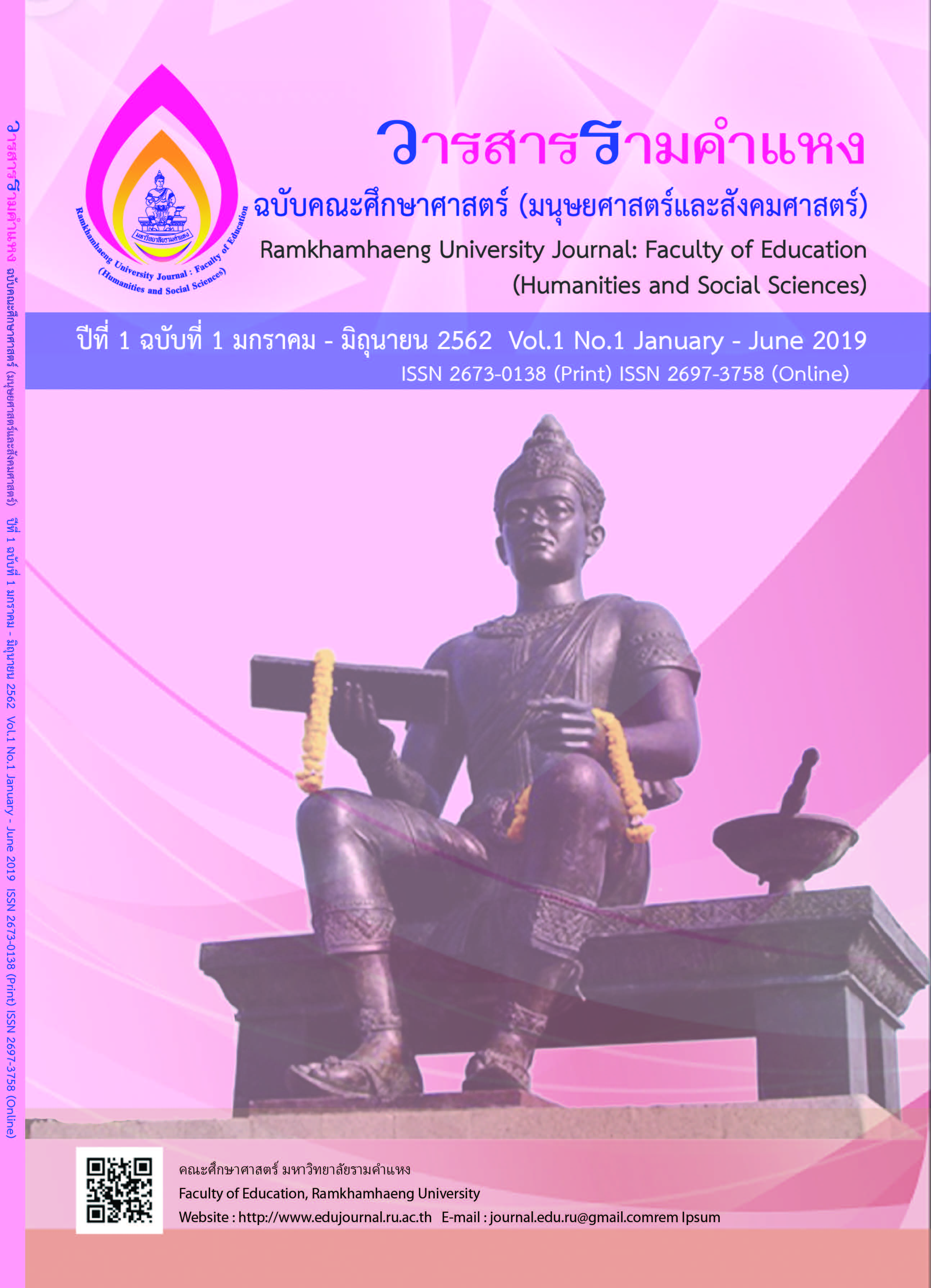The Relationship and Influence of Internet User's Characteristic on Internet Addiction among Undergraduate Students
Main Article Content
Abstract
The study aimed to investigate the relationship and predict Internet user's characteristic (i.e. age at the start using the Internet, the longevity of Internet usage from the beginning to the present, and the average internet usage time per day) that influence on Internet addiction among undergraduate students. Samples were 258 undergraduate students (80.6% females and 19.4 males) whose age ranged from 18- 25 years old and they were able to connect to the Internet. All of the samples were asked to complete questionnaires including general information and Internet Addiction Test (IAT). The results revealed that 'age at the start using the Internet' and 'the average internet usage time per day' were significantly correlated with the Internet addiction (r = -.131, p-value < .05 and r = .283, p-value< .01, respectively). ‘The average internet usage time per day' was also shown as a significant predictor of Internet addiction at the level of .01 (ẞ = .296, p-value < .001). Our findings, hence, benefit for a practitioner to gain basic knowledge for designing health- related program emphasizing on promoting healthy Internet usage behavior since childhood. This promotion program would be able to enhance individual to grow maturely in the era of advancing technology and digital.
Downloads
Article Details

This work is licensed under a Creative Commons Attribution-NonCommercial-NoDerivatives 4.0 International License.
ผู้ส่งบทความ (และคณะผู้วิจัยทุกคน) ตระหนักและปฎิบัติตามจริยธรรมการวิจัยอย่างเคร่งครัด ทั้งนี้บทความ เนื้อหา ข้อมูล ข้อความ ภาพ ตาราง แผนภาพ แผนผัง หรือข้อคิดเห็นใดๆ ที่ปรากฎในบทความ เป็นความคิดเห็นและความรับผิดชอบของผู้ส่งบทความ กองบรรณาธิการไม่จำเป็นต้องเห็นตามเสมอไป และไม่มีส่วนรับผิดชอบใดๆ โดยถือเป็นความรับผิดของของเจ้าของบทความเพียงผู้เดียว
References
American Psychiatric Association. (1994). Diagnostic and statistical manual of mental disorders (4th ed.). Washington, DC: Authors.
American Psychiatric Association. (2000). Diagnostic and statistical manual of mental disorders (4th ed. Text Rev.). Washington, DC: Authors.
American Psychiatric Association. (2013). Diagnostic and statistical manual of mental disorders (5th ed.). Arlington, VA: American Psychiatric Publishing.
Boumosleh, J. M., & Jaalouk, D. (2017). Depression, anxiety, and smartphone addiction inuniversity students-A cross sectional study. PLOS ONE, 12(8), e0182239.
Chen, B., Liu, F., Ding, S., Ying, X., Wang, L., & Wen, Y. (2017). Gender differences in factors associated with smartphone addiction: A cross-sectional study among medical college students. BMC Psychiatry, 17, 341-349.
Cho, H., Kwon, M., Choi, J. H., Lee, S. K., Choi, J. S., Choi, S. W., & Kim, D. J. (2014). Development of the Internet Addiction Scale based on the Internet Gaming Disorder criteria suggested in DSM-5. Addictive Behaviors, 39, 1361-1366.
Choi, S. W., Kim, D. J., Choi, J. S., Ahn, H., Choi, E. J., Song, W. Y., Kim, S., & Youn, H. (2015). Comparison of risk and protective factors associated with smartphone addiction and Internet addiction. Journal of Behavioral Addictions, 4(4), 308-314.
Demirci, K., Akgönül, M., & Akpinar, A. (2015). Relationship of smartphone use severity with sleep quality, depression, and anxiety in university students. Journal of Behavioral Addictions, 4(2), 85-92.
Kuss, D. J., Van Rooij, A, J., Shorter, G. W., Griffiths, M. D., & Mheen, D. V. (2013). Internet addiction in adolescents: prevalence and risk factors. Computers in Human Behavior, 29, 1987-1996.
Laconi, S., Tricard, N., & Chabrol, H. (2015). Differences between specific and generalized problematic Internet uses according to gender, age, time spent online and psychopathological symptoms. Computers in Human Behavior, 48, 236-244.
Liu, T., & Potenza, M. (2007). Problematic Internet use: Clinical implications. CNS Spectrums, 12(6), 453-466. The Statistics Portal. (2018). Number of internet users in Thailand. Retrieved May 25, 2018, fromhttps://www.statista.com/statistics/553730/number-of-internet-users-thailand/
The Survey System. (2012). Sample size calculation. Retrieved May 25, 2018, from https://www.surveysystem.com/sscalc.htm
Wanajak, K. (2011). Internet use and its impact on secondary school students in Chiang Mai, Thailand. (Ph.D. Dissertation). Edith Cowan University.
Wisessathorn, M. (2015, 30 September-2 October). Personality, academic success and quality of life of undergraduate students with perceiving internet addiction. In SEAAIR 2015 Conference Proceedings (pp. 50-61). Paper presented at Internationalization and Inclusivity of Higher Education in South East Asia: Perspectives, Practices and Pragmatics. Hanoi: Labour Publishing House.
Wissesathorn, M. (2017). The development of a Thai-Internet Dependency Scale (T-IDS) and its psychometric properties. Journal of Institutional Research in South East Asia, 3(15), 44-59.
Wong, T. Y., Yuen, K. S. L., & Li, W. O. (2015). A basic need theory approach to problematic Internet use and the mediating effect of psychological distress. Frontiers in Psychology, 5, 1562.
Xin, M., Xing, J., Pengfei, W., Houru, L., Mengcheng, W., & Hong, Z. (2018). Online activities, prevalence of Internet addiction and risk factors related to family and school among adolescents in China. Addictive Behaviors Reports, 7, 14-18.
Young, K. S. (1996). Internet addiction: The emergence of a new clinical disorder. Cyberpsychology and Behavior, 1(3), 237-244.
Young, K. S. (1998). Caught in the net: how to recognize the signs of internet addiction and a winning strategy for recovery. NY: Wiley.
Young, K. S. (2013). Treatment outcomes using CBT-IA with Internet-addicted patients. Journal of Behavioral Addictions, 2(4), 209-215.

